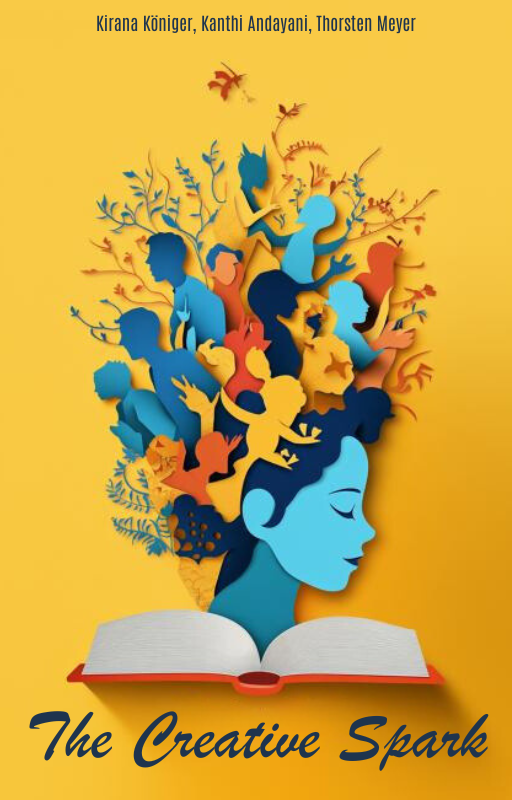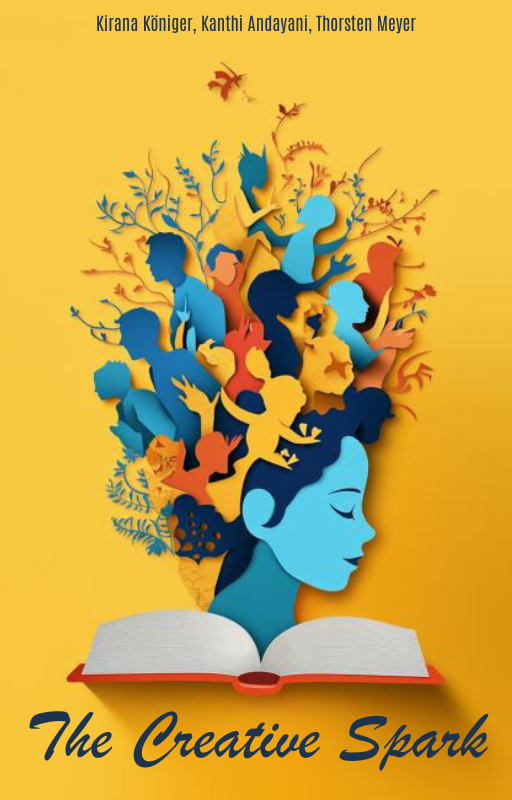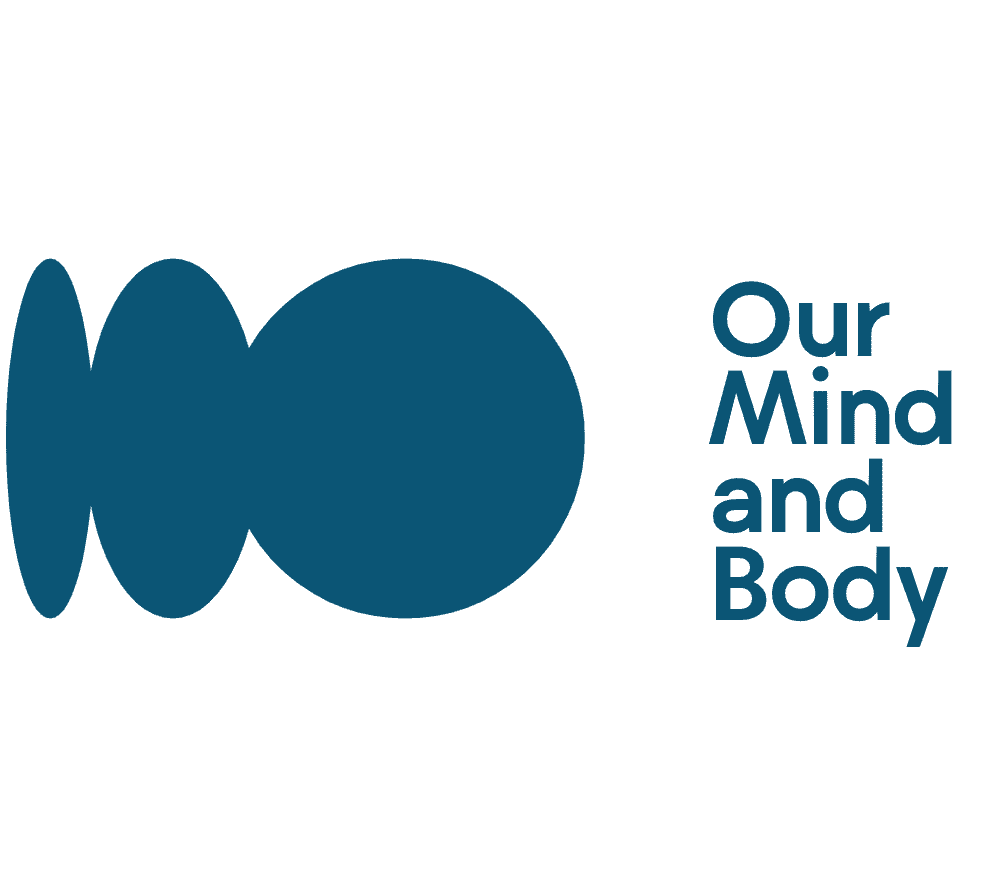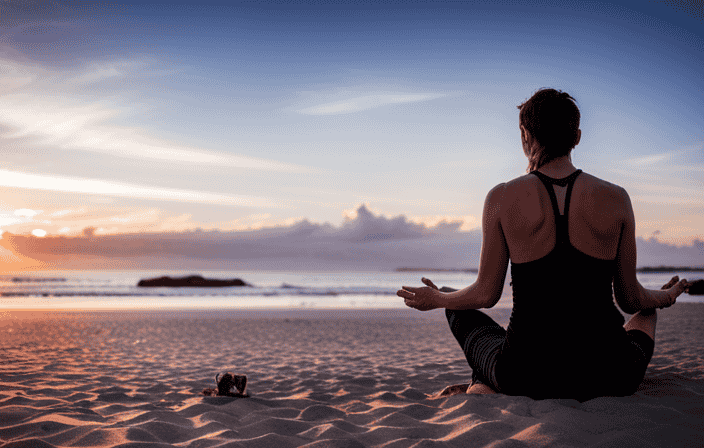Personal Growth
The Power of Alone Time: Discovering Meaningful Moments for Self-Care and Inner Reflection

When many individuals think of ‘alone time’, they might envision a person being physically solitary in their own environment, separated from others. Nevertheless, this is not always the scenario. Alone time can also signify setting aside some personal time for yourself and participating in activities that hold significance to you – even if it’s just allocating five minutes from your day.
The meaning of alone time varies greatly depending on the individual. It could be something as simple as turning off all electronic devices and gadgets and connecting with nature or engaging in a hobby like reading, writing or painting. On the other hand, someone else may prefer to spend their alone time meditating or journaling about what is going on inside them. Whatever activity one chooses to do while having alone time is completely up to them – there is no right or wrong way to practice it!
No matter how busy life gets, we all need moments where we can take a step back from our everyday routines and focus solely on ourselves without any outside distractions. This allows us to clear our minds and recharge so that we can better cope with life’s challenges. With this said, let’s explore the benefits of taking time for yourself…
Benefits Of Taking Time For Yourself
It is undeniable that taking time for yourself is essential in order to maintain a healthy mind and body. This notion of carving out ‘alone time’ can seem daunting, but the advantages of solitude are numerous. With this being said, it’s important to understand the importance of self-care and the power of disconnecting from external influences on occasion.
To explore further, below I have outlined some mental health benefits one can experience by taking intentional moments throughout their day:
- Calmness: Taking time for yourself allows you to take a step back and gain perspective on your life and emotions. Whether through meditation or simply listening to music, these activities help bring focus and clarity into our lives which often result in an overall feeling of calmness.
- Self-Awareness: Being able to appreciate who you really are gives you insight into why we do things the way we think about them – giving us personal awareness about ourselves. Taking thoughtful moments each day helps nurture deeper understanding about ourselves as individuals, providing invaluable insight into how we interact with others.
- Mental Resilience: Disconnecting from everyday stressors allows us to create boundaries between work/life balance while also helping build inner strength to cope with future struggles. Emotional intelligence increases when we practice self-reflection and mindfulness techniques like yoga or journaling during this alone time – ultimately leading towards improved mental resilience against outside forces that could affect our well-being negatively.
Taking care of oneself is just as crucial as taking care of others – if not more so! By creating mindful practices such as those mentioned above, you will find an increase in psychological wellbeing along with improved relationships both professionally and personally over time. Therefore, it’s no surprise that investing in your own physical and emotional state should be at the top of your priority list when looking after your overall health; don’t forget to set aside some quality ‘me-time’ every now and then! Now let’s discuss strategies for making meaningful use of this valuable resource…
Strategies For Making Time For Yourself
It can be tough to make time for yourself when life’s demands seem overwhelming. To help reduce stress and manage your challenges, carving out some alone time each day is essential. Here are some practical strategies for making time for yourself:
Start by allocating a specific block of time in your schedule that you dedicate solely to self-care activities like reading, meditating, or taking a walk. Prioritizing yourself helps you stay balanced and better able to handle the tasks of daily life. If you have trouble getting started, focus on breaking it down into small chunks of 10 minutes throughout the day which adds up to 1 hour per week – just enough for an activity or two.
Another strategy would be revisiting how you spend your time overall – analyze where and how much time goes in order to identify areas where you could cut back or delegate more efficiently. This way, you will create space for moments with just yourself allowing opportunities to truly relax and unwind.
When creating a personal space to enjoy solitude, don’t forget little things like lighting candles or playing music as they can set the tone for relaxation and provide comfort during difficult times.
Creating A Personal Space To Enjoy Solitude
According to a recent survey, over 75% of people feel overwhelmed due to the lack of alone time in their lives. The stress and anxiety created by our busy lifestyles can take its toll on us mentally and physically. To counter this problem, carving out some private space for yourself is essential – it’s an opportunity to find peace and recharge your batteries. Creating a personal space where you can enjoy solitude without distractions is one of the most effective strategies for coping with life’s challenges.
Creating a dedicated area in your home or office gives you the chance to relax and unwind in complete privacy. Consider adding comfortable furniture such as chairs or couches, along with items that make the space feel special like soft pillows, blankets, candles, bookshelves, artwork, etc. Dedicated lighting fixtures will create a calming atmosphere while scented diffusers give off pleasant aromas that promote relaxation. You might also want to add plants or flowers which have been shown to reduce stress levels and improve moods.
In addition to creating a physical environment conducive to relaxation, it’s important not to forget about digital boundaries as well. Unplugging from technology and social media may seem daunting at first but doing so allows you greater freedom from external influences when spending time alone in your own personal space. Make sure all electronic devices are powered down before entering your peaceful haven – no phones ringing or notifications popping up! With these simple steps taken care of beforehand, you’ll be able to fully rest and rejuvenate in the comfort of your own private sanctuary whenever needed.
How To Unplug From Technology And Social Media
Unplugging from technology and social media can be a daunting prospect, but it’s essential for managing stress levels. Taking regular breaks from digital devices is an important step in combating technology addiction and the resulting anxiety or depression. To start your digital detox, begin by limiting yourself to one hour of screen time each day. This could include checking emails, scrolling through newsfeeds, and playing video games. During this time, set aside any work-related tasks that you simply must do so as not to become too overwhelmed.
For the remainder of the day, turn off all notifications and put away your cell phone or laptop until the next morning. Make sure you create a space where no screens are allowed such as your bedroom at night – this will help establish healthy boundaries between tech use and relaxation. In addition, try to steer clear of online activities that may lead to distraction or procrastination like shopping, browsing endlessly on YouTube or aimlessly switching apps on your device.
Instead, opt for activities that bring about more mindful moments such as journaling, reading a book outside in nature or meditating with calming music during alone time. These small changes can add up over time which can result in feeling rejuvenated instead of exhausted after spending time online. As we move forward into the future of technological advances and advancements in our lives, remember there’s always room for balance when it comes to unplugging from technology and finding joy offline! With these simple steps taken towards understanding how much tech can impact us mentally and emotionally –we can better cope with life’s challenges while carving out some alone time each day to let solitude soothe our stress.
Mindful Activities To Enjoy During Alone Time
Alone time can be very beneficial for reducing stress and finding a sense of peace. After disconnecting from technology and social media, it is important to take advantage of the opportunity to practice mindful activities that serve as an outlet for stress relief. Here are some creative ideas to incorporate into your daily routine:
- Meditation – Take a few moments each day to sit in stillness and focus on your breathing. Allow yourself to truly relax and clear your mind.
- Journaling – Writing out thoughts and feelings can help you process emotions constructively while also providing clarity on any unresolved issues or worries.
- Yoga & Breathing Exercises – Movement helps release built-up tension in both body and mind, allowing you to achieve greater relaxation. Simple yoga poses like cat/cow combined with deep diaphragmatic breathing will leave you feeling calmer and more centered.
- Visualization – Use visualization techniques such as guided imagery or positive affirmations to create calming scenarios within your own imagination. This type of self-directed mental exercise can bring about inner calm and contentedness when practiced regularly.
Engaging in these mindful activities during alone time provides significant benefits for managing stress levels holistically by connecting with oneself both mentally and physically. Self-care practices like meditation, journaling, yoga, breathing exercises, visualization, etc., all offer unique ways of nurturing one’s wellbeing even if only done for a few minutes each day. Taking this dedicated time for yourself leads to improved resilience against life’s challenges which makes transitioning into the subsequent section about ‘reducing stress through self-care practices’ easier than ever before!
Reducing Stress Through Self-Care Practices
We all face life’s challenges, and carving out some alone time each day can be an effective way to soothe our stress. Taking a break from the hustle and bustle of daily life to practice self-care is essential for managing our mental health. Like a beautiful sunflower blooming in the middle of a field, we too can bloom with joy when engaging in relaxation techniques that foster feelings of contentment.
When it comes to reducing stress through self-care practices, there are many options available. For example, positive affirmations can help us focus on the positives rather than dwelling on negative thoughts or situations. We could also explore mindful meditation as a tool for connecting with ourselves on a deeper level and strengthening our emotional well-being. Other great ideas include spending quality time with family and friends, taking up hobbies such as reading or gardening, or even just taking occasional naps throughout the day!
Overall, finding ways to relax and reframe stressful situations into more manageable ones requires dedication and patience; however, if done deliberately over time these self-care practices will become second nature and make difficult moments more bearable. To further support our journey towards improved mental health while alone, let’s now explore how connecting with nature can provide plenty of comfort.
Connecting With Nature While Alone
When life’s challenges seem overwhelming, carving out some alone time to connect with nature can be a soothing and restorative experience. Taking regular nature walks or engaging in simple outdoor activities such as gardening or bird watching are excellent ways to help reduce stress levels and gain clarity of thought. Spending quality time outdoors is also known to boost your mood, increase energy levels and improve focus.
Whether you live in an urban area or the countryside, it’s easy to find opportunities for connecting with nature while alone. Even if you don’t have access to large parks and trails, improvising nature by exploring local gardens, vacant lots or nearby waterways can provide meaningful experiences of solitude. Wherever you go on your own journey into nature, remember that mindfulness is key—pause often during your excursion to appreciate the beauty around you and breathe in deeply.
The power of silence and stillness should not be underestimated when striving for inner peace. Learn how to listen closely to what Mother Nature has been telling us all along: taking care of ourselves helps us cope better with life’s struggles.
Understanding The Power Of Silence And Stillness
Interestingly, a study by the University of Gothenburg in Sweden found that people who spent time alone and connected with nature experienced an improved mood within only five minutes. As we continue to carve out some alone time each day, it is important to understand the power of silence and stillness. Reaping the benefits of embracing quiet moments helps us cope with life’s challenges more effectively while calming our minds.
Stillness has many powerful healing qualities associated with it as well. It can help restore balance between mind, body and spirit which can lead to better mental health. In addition, being silent gives us the opportunity to reflect on ourselves without distraction or interruption from others. We are able to observe our thoughts and feelings objectively rather than getting caught up in them emotionally. Taking this moment for yourself allows you to become aware of any patterns or behaviours that may be affecting your wellbeing negatively.
When faced with stressful situations, taking a few moments away from the hustle and bustle of everyday life can provide much needed clarity and perspective. Utilizing these calm moments will give you insight into how best to manage tough times in life going forward. This understanding gained through silence offers invaluable wisdom that can aid you during challenging periods in your life journey.
By understanding what works best for us when dealing with difficult circumstances, we take back control over our lives again – empowering us to make healthier choices moving forward. When done regularly, carving out alone time not only soothes stress but also recharges your mind, body and spirit – allowing you to face whatever comes next more confidently and optimistically!
Recharging Your Mind, Body And Spirit
| Table: Mind, Body and Spirit | Mindful Meditation | Spiritual Healing | Emotional Rejuvenation |
|---|---|---|---|
| Physical Relaxation | Energy Replenishment | Holistic Wellbeing |
Taking time each day to recharge your mind, body and spirit is essential for mental health. Mindful meditation helps us develop a deeper awareness of our thoughts, feelings, emotions and actions which allows us to stay in the present moment. Regular practice can help cultivate compassion, reduce stress levels, increase concentration and improve overall wellbeing.
Spiritual healing involves connecting with something greater than ourselves such as nature or God. It’s about taking time out from the hustle and bustle of life to experience inner peace. This could be through prayer, reading spiritual books or attending religious ceremonies. Practicing this type of self care will help you connect with yourself on a deeper level – allowing you to nurture your soul and gain clarity for the future.
Finally, emotional rejuvenation requires finding ways that allow us to express our true selves without judgement or fear of being rejected. We can do this by writing down our deepest thoughts in a journal or talking candidly with supportive friends who accept us unconditionally. In addition, physical relaxation techniques such as yoga or tai chi can also help us regulate our moods while replenishing energy levels throughout the day. All these activities lead towards holistic wellbeing – helping build resilience against life’s challenges so we can live an authentic life full of joy and contentment.
Frequently Asked Questions
How Much Alone Time Should I Take Each Day?
How much alone time should I take each day? This is an important question for anyone looking to cope with life’s challenges and reduce stress. Finding the right amount of daily alone time can be tricky, as it varies from person to person. However, there are some general guidelines that you can use to help determine how much alone time is optimal for you.
First off, it’s important to recognize why taking regular breaks and carving out some solo moments throughout your day can be beneficial. Having a few minutes or hours each day where you focus solely on yourself without any distractions gives your mind and body a chance to reset and recharge. It also helps promote self-care practices such as meditation or journaling which can improve mental health outcomes over time. Additionally, when done in moderation, having small chunks of daily alone time can lead to greater productivity since you’re less likely to suffer from burnout due to lack of rest or overwork.
So what’s the ideal amount of daily alone time? That depends largely on individual needs and preferences; however, experts suggest setting aside at least 30 minutes per day for activities like reading, listening to music or going for a walk. Taking more extended periods of solitude – ranging from 1-2 hours – may also be beneficial if needed but try not go overboard either way so that other responsibilities don’t get neglected. Setting clear boundaries between work/family obligations and ‘me time’ will help ensure that everyone’s needs are balanced while still allowing room for relaxation and rejuvenation too.
Ultimately, finding the right balance between solitary moments and social interactions is key for managing stress levels effectively so experiment with different amounts of daily alone time until you find one that works best for you!
Are There Any Risks Associated With Taking Too Much Alone Time?
Are there any risks associated with taking too much alone time? Taking some alone time can be beneficial for our mental health, but it is possible to take too much. There are some potential risks that come with excessive solitude. I’m going to discuss the following:
- Risks of Too Much Alone Time
- Impact on Personal Space
- Different Perspectives
- Ways to Reduce Risk Factors
When we take too much alone time without considering our mental and emotional wellbeing, this can lead us down a slippery slope towards isolation and even depression. Feeling isolated or lonely means losing touch with friends and family members who may provide essential support during difficult times in life – something that’s especially important when dealing with challenges such as those related to coping with life’s struggles. It’s therefore important to keep a healthy balance between being by yourself and engaging positively with others – not only through face-to-face contact, but also via social media platforms where you can interact from a distance if need be.
Taking too much time away from people could negatively impact your personal space; feeling overwhelmed or suffocated due to an overload of company isn’t ideal either! Having enough personal space gives you the freedom to express yourself openly and honestly within safe boundaries – something which is incredibly valuable for anyone experiencing difficulties in their day-to-day lives. Therefore, try to find your own sweet spot between loneliness and overcrowding so that you don’t become overwhelmed or feel unsupported when things get tough.
It’s worth noting that what constitutes ‘too much’ alone time varies depending on individual circumstances; while one person may thrive spending long periods of time in complete solitude, another may require more frequent contact with others in order stay happy and healthy mentally speaking. As such, it pays off to listen carefully to your body’s needs in order ensure you remain balanced both physically and emotionally – because after all, everyone has different preferences regarding how they manage their relationships with themselves and other people around them!
To reduce risk factors associated with taking too much alone time, consider setting aside specific times each week dedicated just for yourself (e.g., 30 minutes every Sunday morning). Also aim for quality over quantity when interacting socially – connect deeply rather than superficially whenever possible – which will help minimize feelings of loneliness while simultaneously encouraging meaningful connections among peers who understand and value each other’s experiences more fully than acquaintances do. Finally, make sure you reach out for support should issues arise that seem unmanageable on your own!
What Are The Best Ways To Reduce Stress During Alone Time?
It’s no surprise that stress relief is one of the most sought-after health benefits in our modern world. According to a recent survey, 70% of adults experience physical symptoms due to psychological distress. Taking alone time for yourself can be an effective way to reduce stress and anxiety levels. So what are the best ways to reduce stress during your own personal solo time?
Mindfulness activities such as meditation, deep breathing exercises, or yoga offer great opportunities to relax and refocus your mind away from stressful thoughts. These activities help you become more aware of both your inner emotional state and outside environment so that you can better manage any difficult emotions you may be feeling. Additionally, taking regular breaks throughout the day has been shown to increase productivity while providing much needed mental respite from everyday pressures. Here’s 5 ideas for reducing stress on a daily basis:
- Take short walks around the block
- Try aromatherapy or essential oils
- Listen to calming music
- Journal about your feelings
- Practice mindful eating techniques
By implementing these simple strategies into our regular routine, we can begin cultivating healthy habits which will enable us to cope with life’s challenges in a positive manner. Stress management is all about creating balance between work and play – allowing ourselves some quality ‘me-time’ each day without guilt or judgement is key! Focusing on stress busting activities like those above not only helps us take control of our wellbeing but also gives us permission to enjoy moments of calm amidst life’s constant hustle and bustle.
How Can I Create An Effective Personal Space For My Alone Time?
Creating an effective personal space for your alone time can be a powerful way to reduce stress. It is important to make sure that you are creating a space where you feel safe and comfortable, as this will help you get the most out of your alone time. Here are some tips on how to create an effective personal space for yourself in order to better cope with life’s challenges.
First, think about what kind of environment makes you feel relaxed and at ease. This could include things like plants or candles that bring peace and comfort into the room. You should also consider if there is enough light or sound—too much noise can increase stress levels while too little may not provide enough stimulation. Additionally, try to incorporate items that remind you of special moments or achievements; these will act as positive reminders when needed.
Next, focus on how the physical layout of the room impacts your moods and emotions. Is it cluttered? Or perhaps sparsely decorated? Maybe rearranging furniture so it’s more conducive to relaxation would work better for you than having all four walls full of posters? Try different configurations until you find one that works best for helping manage stress during alone time.
Finally, give thought to any activities or hobbies that might benefit from its own dedicated area within your personal space. If painting helps calm your mind, set up an easel in a corner with paints and brushes nearby; similarly, maybe reading offers relief from anxiety so dedicate a portion of the room specifically reserved for bookshelves and comfy seating. By customizing your own private sanctuary according to individual needs, effective personal spaces become places where solace can truly be found amidst life’s challenges.
What Are The Best Ways To Make Use Of Alone Time?
When life gets overwhelming, carving out some alone time can be a great way to de-stress. But it’s important to make sure that the time you take for yourself is meaningful and productive. What are the best ways to make use of your alone time? From meditative activities to reflective journaling, there are plenty of effective strategies for making the most of this precious resource.
Meditative activities such as yoga and Tai Chi can help center our minds and bring focus back into our lives. Taking part in mindful practices like these can create an inner peace that will go a long way towards dealing with stress. Plus, they have been shown to have numerous physical health benefits too!
Reflective journaling is another great way to utilize alone time productively. Writing about your thoughts and feelings allows us to gain insight into what’s really going on inside ourselves – enabling us to better understand our own emotions and reactions. This kind of self-reflection can also provide clarity when we’re feeling overwhelmed or confused by events in our lives.
Finally, creative pursuits like art or music can be powerful outlets during times of distress. Engaging in something enjoyable while allowing yourself space from external pressures helps restore balance within ourselves – an essential component of any healthy lifestyle. Additionally, engaging in self-care activities like taking bubble baths or reading a book can help recharge both body and mind after a draining day.
In short, making use of alone time wisely is key for coping with life’s challenges – whether through meditative activities, reflective journaling, creative pursuits or mindfulness practices, everyone has their own unique path towards finding solace amidst chaos.
Conclusion
Our lives can be filled with challenges, and carving out some alone time each day is a great way to help us cope. Alone time allows us to take a break from the stresses of life and just relax. It’s important to remember that too much alone time can lead to feelings of isolation, so it’s best to keep our alone time within reasonable limits.
When we do have solo moments, there are many ways in which we can reduce stress during this period: listening to music, reading books or magazines, writing in journals, meditating, exercising or simply taking a nap. We should also create an effective personal space for our alone time – one where we feel safe and comfortable surrounded by whatever items bring peace and joy into our lives.
For example, let’s say Mary has been struggling with her mental health for years now and she’s feeling overwhelmed trying to manage both work-related tasks and home responsibilities at once. To help her cope better with these daily pressures, Mary sets aside 30 minutes every night before bedtime as ‘me-time’ in her bedroom sanctuary; here she reads books or listens to calming songs while sipping on herbal tea – all activities designed specifically for her own relaxation needs. Having this dedicated period helps Mary gain perspective on what matters most in life and enables her to handle any obstacles more effectively when they come up.
Ultimately, finding meaningful ways to use your precious alone time is essential for leading happier and healthier lives – so don’t forget carve out some extra me-time each day!
Meet Kalinda, the passionate and visionary Editor-in-Chief of OurMindAndBody.com. Kalinda is a beacon of light in the realm of holistic well-being, and her mission is to positively impact the lives of others by inspiring them to embrace a healthier and more fulfilling lifestyle.
With a deep-rooted love for meditation, yoga, and spirituality, Kalinda’s journey toward self-discovery and personal growth started at a young age. She found solace and strength in these practices, which not only helped her cope with the challenges of life but also provided her with a profound sense of purpose. Eager to share the transformative power of these ancient disciplines, Kalinda embarked on a path to spread awareness and understanding.
Personal Growth
Book Review: “The Creative Spark: Unleashing Your Inner Artist”

Rediscovering Creativity in the Digital Age
In a world where digital distractions often overshadow our creative instincts, “The Creative Spark: Unleashing Your Inner Artist” emerges as a timely and empowering guide. Authored by Kirana Königer, Kanthi Andayani, and Thorsten Meyer, this book provides a comprehensive and accessible approach to reigniting the creative flame within each of us.
A Global Tapestry of Creative Wisdom
The authors draw on their diverse backgrounds—Indonesian roots, European influences, and global experiences—to weave a rich tapestry of creative insights. This multicultural perspective is not just a backdrop but the foundation of the book’s philosophy, which sees creativity as a universal language that transcends cultural and geographical boundaries.

Expanding the Boundaries of Creativity
“The Creative Spark” encourages readers to rethink creativity, moving beyond the traditional confines of the arts. The authors argue convincingly that creativity is a fundamental life skill, essential for problem-solving, personal growth, and professional success across all domains.
The Science of Creativity
Anchored in scientific research, the book explores:
- The neurological foundations of creativity
- The roles of different brain regions in creative thinking
- The impact of neuroplasticity on the development of creative skills
- How environment and lifestyle choices affect creative potential
Practical Exercises for Creative Development
Each chapter offers a variety of hands-on exercises designed to nurture creativity across different fields:
- Writing prompts to spark the imagination of aspiring authors
- Visual challenges for artists and designers
- Culinary experiments for food enthusiasts
- Mindfulness practices to enhance creative awareness
- Cross-disciplinary projects that blend multiple forms of artistic expression
Overcoming Creative Challenges
The book provides practical strategies for overcoming common obstacles in the creative process, including:
- Breaking through creative blocks and periods of stagnation
- Overcoming self-doubt and imposter syndrome
- Managing perfectionism and the fear of failure
- Balancing creative pursuits with everyday responsibilities
Creativity in the Digital Era
The authors thoughtfully examine how technology can both enhance and hinder creativity, discussing:
- The potential of digital tools to support creative processes
- Balancing digital and analog approaches to creativity
- Leveraging social media to share and promote creative work
- Addressing ethical considerations in the age of AI-generated art
A Journey of Self-Discovery
Throughout the book, the authors share personal stories from their own creative journeys, adding depth and relatability to the content. Readers are invited to embark on their own journey of self-discovery, guided by reflective questions and exercises designed to help uncover their unique creative strengths.
Critical Analysis
Strengths:
- A broad and inclusive approach that extends beyond traditional artistic boundaries
- A multicultural perspective offering a wealth of global insights
- A strong scientific foundation combined with practical applications
- An accessible tone that makes creativity approachable for all readers
Considerations:
- The broad scope of topics may be overwhelming for some readers
- Certain cultural references may resonate differently depending on the audience
- Some advanced readers may find familiar concepts, though they are presented with fresh insights
Conclusion: A Guide to Creative Renewal
“The Creative Spark: Unleashing Your Inner Artist” is more than just a guide to artistic expression—it’s a blueprint for living a more imaginative and fulfilling life. By redefining creativity as a core human trait, the authors offer a work that has the potential to transform not just how readers approach art, but how they approach life itself.
Rating: 4.85/5 stars
Highly recommended for its inclusive approach, scientific grounding, and transformative potential, “The Creative Spark” stands out as a valuable resource for anyone looking to reignite their creative passions and embrace a more inspired way of living.
Meet Nadi, the soulful writer and explorer of inner realms who graces OurMindAndBody.com with her profound insights and heartfelt wisdom. With a profound passion for mindfulness, meditation, and spiritual growth, Nadi weaves words that touch the hearts and minds of readers, leaving a lasting impact on their well-being journey.
Rooted in a background of philosophy and psychology, Nadi’s curiosity about the human mind and the mysteries of the soul led her on a transformative path of self-discovery. Drawn to the transformative power of mindfulness and meditation, she embarked on a quest to understand the intricacies of these practices, not only for her own growth but also to inspire others to embark on their own inner journeys.
Personal Growth
Clearing Brain Fog: Top Foods For Mental Clarity

Experiencing mental fog is like navigating through a dense forest without a map. It can be frustrating, exhausting, and hinder your ability to think clearly and be productive.
But fear not, because there is a way to clear the fog and regain mental clarity. By incorporating certain foods into your diet, you can nourish your brain and improve cognitive function.
In this article, we will explore the top foods that can help clear brain fog and enhance mental clarity.
Key Takeaways
- Brain fog is a state of mental confusion and exhaustion that hinders productivity and quality of life.
- Unhealthy eating habits cause inflammation and cognitive decline, while nutrient-rich foods repair cells and promote brain function.
- Blueberries, fatty fish, nuts, dark chocolate, leafy greens, turmeric, and green tea are foods that can improve brain health and clarity.
- A balanced diet with brain fog-fighting foods is crucial for mental clarity, and integrating these foods into your diet can help improve cognitive function and memory recall.
Top Brain Fog-Fighting Foods
I love incorporating these brain fog-fighting foods into my diet to improve my mental clarity and overall brain health.
Blueberries are a fantastic choice as they are rich in antioxidants, which prevent oxidative stress and inflammation in the brain. They also enhance memory function, making them a great addition to my daily routine.
Fatty fish, like salmon and sardines, are another favorite of mine. They contain omega-3 fatty acids that improve brain health, strengthen memory, and enhance cognitive function.
Nuts are a convenient and tasty option as they contain healthy fats, protein, and fiber, all of which contribute to improved cognitive functioning.
Dark chocolate, in moderation, is a delicious way to protect against oxidative damage and improve cognitive function with its flavonoids.
Leafy greens, such as spinach and kale, are nutritional powerhouses that provide vitamins and antioxidants to protect the brain.
Lastly, turmeric, with its anti-inflammatory and antioxidant properties, is excellent for improving memory function.
Incorporating these brain fog-fighting foods into my diet has made a noticeable difference in my mental clarity and overall brain health.
Importance of Nutrients
Nutrients from a balanced diet are vital for promoting brain health and enhancing cognitive function and memory recall. When it comes to clearing brain fog and improving mental clarity, certain nutrients play a key role.
Here are three essential nutrients that can help boost your brainpower:
-
Omega-3 Fatty Acids: These healthy fats found in fatty fish like salmon and sardines are crucial for brain health. They have been shown to improve memory and cognitive function, making them an excellent choice for combating brain fog.
-
Antioxidants: Foods rich in antioxidants, such as blueberries, protect the brain from oxidative stress and inflammation. They also enhance memory function, helping to clear mental fog.
-
Vitamin E: This powerful antioxidant found in nuts like almonds and sunflower seeds has been linked to improved cognitive functioning. Including these nutrient-rich foods in your diet can provide the essential vitamins and minerals needed for optimal brain health and mental clarity.
Gut Health and Cognitive Function
Improving gut health is crucial for enhancing cognitive function and promoting optimal brain function. The gut microbiome, which consists of trillions of microorganisms, plays a significant role in our overall health, including our mental well-being. Research has shown that a healthy gut contributes to emotional stability and cognitive capacity.
When the gut is filled with beneficial bacteria, it reduces anxiety and depression levels, leading to improved mental clarity. Incorporating whole foods into our diet is key to maintaining a healthy gut. Foods like fruits, vegetables, and whole grains are rich in fiber and essential nutrients that support gut health. Additionally, probiotic-rich foods like yogurt and kimchi can replenish the gut with beneficial bacteria.
By prioritizing gut health through a balanced diet, we can boost our cognitive function and experience greater mental clarity.
Effects of Diet on Sleep
Eating a balanced diet with nutrient-rich foods can positively impact sleep quality and duration. Poor diet choices, such as consuming excessive sugar and processed foods, can disrupt our natural sleeping habits, leaving us feeling fatigued and decreasing our cognitive function.
On the other hand, a diet that includes healthy fats and complex carbohydrates can improve our sleep. When we have sound slumber, we experience enhanced mental clarity and increased energy levels throughout the day.
Incorporating foods like blueberries, fatty fish, nuts, dark chocolate, leafy greens, turmeric, and green tea into our meals can help promote a restful night’s sleep. So, by making conscious choices about what we eat, we can improve both our diet and our sleep, leading to better mental clarity and overall well-being.
Blueberries: Memory Enhancer
Indulging in a handful of juicy blueberries is like unleashing a burst of sunshine in my mind. Their antioxidants work wonders in boosting my memory function. Blueberries are packed with antioxidants that help prevent oxidative stress and inflammation in the brain, ultimately enhancing memory function.
These little berries are also rich in flavonoids, which have been shown to improve cognitive function and protect against oxidative damage. Not only are blueberries delicious, but they are also a practical choice for improving mental clarity.
Whether enjoyed by themselves, added to a smoothie, or sprinkled on top of yogurt, incorporating blueberries into my diet is an easy and tasty way to support my brain health.
So, whenever I feel the fog rolling in, I reach for a handful of blueberries to give my memory a boost and clear away the mental haze.
Fatty Fish: Cognitive Booster
When I include fatty fish in my diet, I notice a significant boost in my cognitive abilities.
Fatty fish, such as salmon, trout, and sardines, are rich in omega-3 fatty acids, which are essential for brain health. These fatty acids help improve memory, enhance cognitive function, and even protect against age-related cognitive decline.
Research has shown that a regular intake of omega-3 fatty acids can improve attention, focus, and overall mental clarity. Additionally, the anti-inflammatory properties of omega-3s can reduce brain fog and promote a healthy brain.
Incorporating fatty fish into my meals not only provides me with a delicious and satisfying option but also supports my brain health and keeps my mind sharp.
Nuts: Brain Function Improvement
Including nuts in my diet has significantly improved my brain function and cognitive abilities. Nuts, such as almonds, walnuts, and cashews, are packed with healthy fats, protein, and fiber, all of which are essential for optimal brain functioning.
The healthy fats in nuts, including omega-3 fatty acids, help nourish the brain and support cognitive processes like memory and learning. Additionally, the protein in nuts provides a steady supply of amino acids that are necessary for neurotransmitter production, which influences mood and cognitive function.
The fiber in nuts helps regulate blood sugar levels, preventing energy crashes and promoting sustained mental clarity. I have found that incorporating a handful of nuts into my daily routine not only satisfies my snack cravings, but also boosts my brain power and enhances my overall cognitive performance.
Dark Chocolate: Cognitive Protection
Dark chocolate has been an essential part of my diet for its cognitive protection benefits. Not only is it delicious, but it also contains flavonoids that improve cognitive function and protect against oxidative damage. Flavonoids have been shown to enhance memory and attention, making dark chocolate a great choice for clearing brain fog and promoting mental clarity.
Studies have found that the antioxidants in dark chocolate can increase blood flow to the brain, which improves cognitive function. Additionally, dark chocolate has been linked to a reduction in inflammation in the body, including the brain, which can contribute to better mental health.
When choosing dark chocolate, aim for varieties with a high percentage of cocoa (70% or higher) to maximize the benefits. Remember to enjoy it in moderation as part of a balanced diet, as it is still high in calories.
So indulge in a small piece of dark chocolate to give your brain a boost and improve your mental clarity.
Frequently Asked Questions
How does brain fog affect productivity and quality of life?
Brain fog, like a dense fog over a city, impairs focus, memory, and energy levels, hindering productivity and diminishing quality of life. It’s crucial to address brain fog through a balanced diet and lifestyle choices for improved mental clarity.
Are there any other factors besides unhealthy eating habits that can cause brain fog?
Yes, besides unhealthy eating habits, other factors such as lack of sleep, chronic stress, hormonal imbalances, certain medications, and underlying medical conditions can also contribute to brain fog. It’s important to address these factors for improved mental clarity.
What are some nutrients that are essential for brain health and cognitive function?
Some essential nutrients for brain health and cognitive function include antioxidants from blueberries, omega-3 fatty acids from fatty fish, healthy fats from nuts, flavonoids from dark chocolate, vitamins from leafy greens, and anti-inflammatory properties from turmeric.
How does the gut microbiome affect emotional stability and cognitive capacity?
The gut microbiome plays a crucial role in emotional stability and cognitive capacity. Healthy gut organisms reduce anxiety and depression levels, while an imbalance can lead to mental health issues. Taking care of your gut health is essential for overall well-being.
Can a balanced diet with brain fog-fighting foods improve sleep quality?
Yes, a balanced diet with brain fog-fighting foods can improve sleep quality. A diet rich in healthy fats and complex carbs promotes sound slumber, leading to enhanced mental clarity and energy levels.
Conclusion
In conclusion, our brains deserve the best fuel to function at their peak. Just like a well-oiled machine, we can clear away the brain fog and unlock mental clarity with the power of food.
These brain fog-fighting foods are like superheroes, swooping in to save the day. Blueberries, fatty fish, nuts, dark chocolate – each one holds the key to unlocking our cognitive potential.
So let’s nourish our brains, fuel our minds, and banish brain fog for good. The power is in our hands, and on our plates.
Say hello to Cypress, the soulful wordsmith behind the insightful articles at OurMindAndBody.com. Cypress is a gifted writer who weaves words with grace and precision, using language as a powerful tool to inspire, heal, and uplift the spirits of readers.
With a background in literature and a passion for personal growth, Cypress brings a unique perspective to the world of well-being and spirituality. Having experienced the transformative effects of meditation and yoga firsthand, Cypress is deeply connected to the essence of these practices and their potential to enrich lives.
Personal Growth
Smart Investing: Maximizing Returns And Minimizing Risk

Sometimes fate has a funny way of guiding us towards what we really need. By pure chance, you have stumbled upon an article on smart investing – a topic that could potentially change the trajectory of your financial future.
Investing wisely is all about maximizing returns while minimizing risk, and it’s never too early to start. With the right knowledge, tools, and guidance, you can navigate the complex world of investments and make informed decisions that will lead to long-term success.
So, let’s dive in and explore the key principles of smart investing, shall we?
Key Takeaways
- Investing at a young age can lead to significant growth in account balance over time.
- Diversifying investments reduces risk and increases potential returns.
- Regularly monitoring investments and adjusting strategies based on market conditions is important.
- Understanding tax implications and implementing tax-efficient investment strategies can maximize returns.
What is Investing?
Investing is the process of allocating funds into different investment options with the goal of maximizing returns and minimizing risk. It involves carefully selecting investment instruments that have the potential to generate income or appreciate in value over time. By diversifying investments across various asset classes, such as stocks, bonds, and real estate, investors can reduce the risk associated with any single investment.
It is important to understand the merits and demerits of different investment options, as well as their tax implications. Regular monitoring of investments and staying updated on market trends is crucial for informed decision-making. Patience, discipline, and a realistic budget are essential for long-term investment success. Seeking mentorship or taking investment courses can provide valuable guidance in navigating the complex world of investing.
Starting Early
Beginning early in the world of finance is like planting a small seed that has the potential to grow into a mighty oak, providing shade and stability for years to come. When it comes to investing, starting early is crucial for maximizing returns and minimizing risk. Here are three reasons why:
-
Compounding Growth: Investing at a young age allows your money to grow exponentially over time. By starting early, you can take advantage of compounding, where your investments generate returns that are reinvested, leading to even higher returns in the future.
-
Financial Security: Early investments can minimize financial strain and stress in later years. By building a solid investment portfolio early on, you can create a cushion for future expenses, such as buying a house, starting a family, or funding your retirement.
-
Time to Learn and Recover: Starting early gives you ample time to learn about different investment options and strategies. It also provides a buffer to recover from any potential losses. With time on your side, you can take calculated risks, learn from your mistakes, and make informed investment decisions.
By starting early, you can set yourself up for long-term financial success and achieve your financial goals with greater ease.
Weighing Options
When it comes to choosing investment options, I consider the merits and demerits of different instruments before making a decision.
Retirement schemes offer stability but may have limited returns, while stocks provide income through buying and selling shares.
ETFs allow investors to purchase and sell stocks at listed prices, while bonds offer monthly or annual interest as a loan to a government or corporate entity.
Each investment instrument has its own advantages and disadvantages, and it’s important to weigh these factors carefully.
By diversifying investments across different asset classes, including real estate and international markets, I can reduce risk and increase potential returns.
A mix of stocks, bonds, and other assets is advisable for long-term success.
Ultimately, making a wise selection of investment options is crucial for maximizing returns and minimizing risk.
Getting an Account
Knowing where to go and which platforms to use for getting an investment account is crucial for me. With so many options available, it’s important to choose a trustworthy and cost-friendly platform.
One platform that stands out for beginners like me is Sofi Invest. Not only does it provide access to multiple investment opportunities, but it also offers valuable information on different types of investment accounts. This makes it easier for me to make informed decisions based on my financial goals and risk tolerance.
By using an online platform like Sofi Invest, I can easily manage my investments and track their performance. It’s reassuring to know that I have a reliable platform to rely on as I begin my investing journey.
Education and Mentorship
I believe that taking an investment course or finding a mentor would be beneficial for me to gain valuable insights and knowledge in the field of investing. Learning from successful investors can provide me with valuable tips and strategies that can help maximize my returns and minimize risks. Having a realistic budget for my initial investments is crucial, and starting small can be a viable approach. I can also borrow ideas from successful investors in my area of interest to further enhance my investment strategy. To grab the attention of the audience, I have created a table below that highlights the importance of education and mentorship in smart investing:
| Importance of Education and Mentorship |
|---|
| Gain valuable insights and knowledge |
| Learn from successful investors |
| Develop effective investment strategies |
| Minimize risks and maximize returns |
Taking the time to educate myself and seek mentorship will provide a strong foundation for my investment journey. It will equip me with the necessary tools and understanding to make informed decisions and navigate the complex world of investing.
Diversification
Diversifying my investments across different asset classes allows for a more balanced and potentially profitable portfolio. By spreading my investments, I can reduce the risk associated with any single investment and increase my potential returns. Here are four reasons why diversification is important:
-
Risk reduction: Spreading investments across various asset classes such as stocks, bonds, real estate, and international markets helps mitigate the risk associated with any one investment. If one asset class underperforms, the others may still provide positive returns.
-
Potential for higher returns: Different asset classes have varying levels of returns over time. By diversifying, I can take advantage of the potential growth in different sectors and markets, increasing the likelihood of achieving higher overall returns.
-
Protection against market volatility: By having a mix of investments, I can protect myself against market fluctuations. When one asset class experiences a downturn, others may be performing well, providing a cushion against losses.
-
Increased opportunities: Diversification opens up opportunities to invest in different industries, sectors, and geographical regions. This allows me to benefit from global exposure and take advantage of emerging markets or sectors that may offer higher growth potential.
Overall, diversification is a key strategy for maximizing returns and minimizing risk in my investment portfolio.
Understanding Risk and Reward
Understanding the relationship between risk and reward is crucial for making informed investment decisions. When it comes to investing, there is an inherent trade-off between the two.
Higher-risk investments have the potential for higher returns, but they also carry a greater chance of loss. On the other hand, lower-risk investments typically offer more stability but may have limited returns.
Assessing your risk tolerance is important before investing, as everyone’s comfort level with risk varies. By diversifying your investments across different asset classes and spreading your risk, you can both mitigate risk and increase potential returns.
Balancing risk and reward is key for long-term success in investing. Regularly monitoring your investments, staying updated on market trends, and adjusting your strategies accordingly will help you navigate the ever-changing investment landscape.
Seeking professional advice can also provide valuable insights and guidance.
Regular Monitoring
Regularly reviewing investment performance can help investors make informed decisions and take advantage of market opportunities. It is essential to monitor investments regularly to stay updated on market trends and news. By doing so, investors can adjust their investment strategies based on current market conditions.
Regularly reviewing investment performance allows for informed decision-making and helps investors identify any necessary adjustments to their portfolio. Additionally, seeking professional advice for investment monitoring can provide valuable insights and guidance.
Monitoring investments ensures that investors can stay on top of their financial goals and make necessary adjustments to maximize returns and minimize risk. In summary, regular monitoring is a crucial aspect of smart investing, enabling investors to make informed decisions and stay ahead of the market.
Markdown list:
- Stay updated on market trends and news
- Adjust investment strategies based on market conditions
- Seek professional advice for investment monitoring
Long-Term vs Short-Term
Moving on from the importance of regular monitoring, let’s now delve into the comparison between long-term investing and short-term trading.
Long-term investing involves holding investments for an extended period, allowing them to grow and compound over time. It is a more passive approach, suitable for investors looking for steady, consistent returns.
On the other hand, short-term trading involves buying and selling investments quickly to take advantage of short-lived market fluctuations. This approach requires active monitoring and quick decision-making. While short-term trading can potentially yield higher returns, it also comes with increased risk and requires a deeper understanding of market trends.
Both approaches have their advantages and disadvantages, and the choice between them depends on individual goals, risk tolerance, and investment strategy.
Tax Considerations
When it comes to tax considerations in investing, I always consult with a tax professional to ensure I have a clear understanding of the tax implications of different investment options. It is crucial to be aware of the tax treatment of each investment to maximize returns and minimize tax liabilities.
Here are a couple of key points to consider:
-
Different investment options have different tax treatments:
-
Stocks and bonds may be subject to capital gains tax when sold.
-
Dividends from stocks may be taxed at a different rate than interest income from bonds.
-
Retirement accounts such as IRAs or 401(k)s offer tax advantages like tax-deferred growth or tax-free withdrawals, depending on the type.
-
Tax-efficient investment strategies can maximize returns:
-
Utilizing tax-advantaged accounts can help minimize taxes on investment earnings.
-
Tax-loss harvesting, where you sell investments at a loss to offset capital gains, can reduce your overall tax liability.
By understanding the tax implications and implementing tax-efficient strategies, I aim to optimize my investment returns while staying compliant with tax regulations.
Importance of Patience
To achieve long-term investment success, I have learned that patience is a crucial virtue. It is important to resist the temptation of making impulsive decisions based on short-term market fluctuations. Instead, I have found that sticking to a well-defined investment plan and maintaining a consistent approach is key.
By avoiding emotional reactions to market ups and downs, I can make informed decisions that align with my long-term goals. Patience allows me to ride out the inevitable market volatility and stay focused on the bigger picture. It also helps me avoid unnecessary stress and panic, which can lead to poor investment choices.
Ultimately, patience and discipline contribute to maximizing returns and minimizing risk in the world of investing.
Frequently Asked Questions
How do I determine my risk tolerance when investing?
To determine my risk tolerance when investing, I assess my financial goals, time horizon, and comfort level with volatility. I consider my willingness to take on risk, my ability to handle potential losses, and my overall investment objectives.
What are some common mistakes to avoid when starting to invest?
When starting to invest, it’s important to avoid common mistakes such as not conducting thorough research, investing without a plan, letting emotions drive decisions, not diversifying, and neglecting to regularly monitor and adjust investments.
Are there any investment options that can provide both stability and high returns?
Yes, there are investment options that can provide both stability and high returns. Some examples include dividend-paying stocks, real estate investment trusts (REITs), and certain bond funds. It’s important to research and assess the risk before investing.
How can I determine if a specific investment platform is trustworthy?
To determine if a specific investment platform is trustworthy, I would research its reputation, read reviews from other investors, and check if it is regulated by reputable financial authorities. Additionally, I would look for transparency, security measures, and customer support options.
What are some strategies for minimizing taxes on investment gains?
To minimize taxes on investment gains, I recommend utilizing tax-efficient investment strategies, such as investing in tax-advantaged accounts like IRAs or 401(k)s, harvesting tax losses, and holding investments for longer periods to qualify for lower capital gains tax rates.
Conclusion
In conclusion, smart investing is all about maximizing returns and minimizing risk. It’s about starting early and making wise choices. It’s about diversifying investments and regularly monitoring their performance. It’s about considering tax implications and being patient for long-term success.
But let’s be honest, who has the time or energy for all that? It’s just so much easier to let someone else handle it and hope for the best. So, why bother with all this smart investing stuff when you can just cross your fingers and hope for a lucky break?
Say hello to Cypress, the soulful wordsmith behind the insightful articles at OurMindAndBody.com. Cypress is a gifted writer who weaves words with grace and precision, using language as a powerful tool to inspire, heal, and uplift the spirits of readers.
With a background in literature and a passion for personal growth, Cypress brings a unique perspective to the world of well-being and spirituality. Having experienced the transformative effects of meditation and yoga firsthand, Cypress is deeply connected to the essence of these practices and their potential to enrich lives.
-

 Spirituality3 months ago
Spirituality3 months agoHow to Learn About Spiritual Energy: A Beginner's Guide!
-

 Spirituality3 months ago
Spirituality3 months agoHow to Keep Your Spiritual Energy High: Stay Vibrant!
-

 Spirituality3 months ago
Spirituality3 months agoHow to Increase Your Spiritual Energy: Simple and Effective Ways!
-

 Angel Numbers3 months ago
Angel Numbers3 months agoHow to Manifest When Seeing Angel Numbers
-

 Spirituality3 months ago
Spirituality3 months agoHow to Know if You Have High Spiritual Energy: Signs and Tips!
-

 Angel Numbers3 months ago
Angel Numbers3 months agoHow to Meditate on Angel Numbers
-

 Personal Growth3 months ago
Personal Growth3 months agoBook Review: “The Creative Spark: Unleashing Your Inner Artist”
-

 Angel Numbers3 months ago
Angel Numbers3 months agoHow to Choose the Right Angel Numbers













